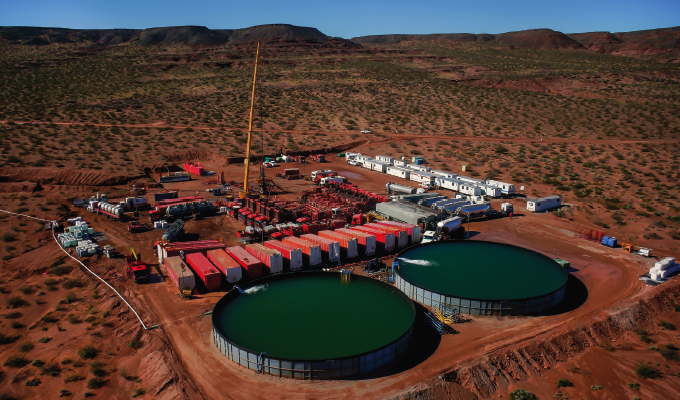Moving away from long-term, uncertain investments, the popularity of industrial field equipment and machinery rental continues to grow yearly. According to the American Rental Association’s (ARA), 2022 revenue is now expected to grow at a 9.9% pace and reach $52.4 billion. Should that happen, ARA says the mark would be a record for the equipment rental industry and surpass the $50.9 billion recorded in 2019. As a result, total visibility into the availability, location, and maintenance of assets is mission-critical to ensure maximum efficiency and cost-effectiveness for all parties involved. This continued growth in equipment rental has emphasized the need for field operation technology as it centralizes data and provides a single source of truth for all rental assets.
EQUIPMENT RENTAL BENEFITS
Why are equipment rentals on the rise? Because heavy machinery and equipment are the backbones of any industrial operation or oil and gas company, but sometimes the upfront investment level associated with purchase can be prohibitive. With on-site industrial equipment such as large excavators running up to $500,000, many smaller companies are unable to afford such high prices on the front end and see few long-term benefits to ownership. This equipment requires constant upkeep to remain in optimal condition, thus excessive maintenance may be a financial detriment to these companies.
In addition to costly repairs, there is collateral damage that can include jobsite disruptions that leave production stalled or the wait time associated with delivery of new equipment while workers sit idle. This loss of time and productivity can often have a greater financial impact than the repair or replacement of the equipment itself. Erasing jobsite disruptions and prolonged downtime are among the many benefits of equipment rental that keep jobs on track and ensure profitability.
Companies that rent versus own also have the flexibility to utilize the latest equipment and technology without becoming saddled with outdated assets. Not to mention, owned equipment still needs to be maintained and updated, and a lack of trained technicians available to make specific updates is always a possibility.
However, while there are considerable benefits to renting, to make it all work, there needs to be a consolidated view for all rental assets using consumable data throughout the rental lifecycle.
MAXIMIZING RENTAL PROCESS
Centralized data is essential when maximizing the equipment rental process. Because there are so many elements to and personas involved in the rental process, it is necessary to have every piece of data accessible to ensure a single source of truth for all assets. Field operations technology creates a seamless experience from the warehouse to the field to the back office.
Let’s look at field operations technology and essential elements for maximizing the equipment rental process. Providing job resources is a great place to start. At the beginning of the rental lifecycle, workers can track requested items throughout a job, such as picked quantity. This includes the quantity of equipment to be picked, number of rentals already picked from a warehouse, reserve quantity, current fulfillment, and quantity delivered, among other details.
Along with equipment and machinery rentals come pick sheets, which are essential for day-to-day functions and can be dramatically enhanced by field operations technology. Building pick sheets allows those on jobsites to select the necessary equipment for a job and send the information straight to the warehouse or plan for future jobs by reserving equipment multiple weeks out. Pick sheets provide the warehouse with the required equipment or machinery to fulfill each order within a specific date range and include all item types (rental, service, etc.), making it a dynamic report for both the warehouse and those on jobsites.
Equipment billing and reporting are also essential functions of field operations technology and maximizing the equipment rental process. Automated equipment billing allows for updating the status of each asset, whether it be on rent, off rent, or on standby, and provides a real-time synopsis for those in the field.
In short, aggregating data with field operations technology allows the data to become actionable. Utilized by those in the back office, reports looking at profit margin, utilization, upcoming deliveries, assets on location, returns, and pending outstanding orders can be created at a moment’s notice. These reports help companies run more strategically as they can also be segmented by job, region, and even globally.
CLOSING THOUGHT
As the percentage of equipment rental income continues to rise for the foreseeable future, companies utilizing industrial operation technology will continue to see the benefits of centralized data, creating greater financial gain and maximizing the industrial rental process. Avoiding significant investment levels and long-term upkeep of industrial equipment is one of the most beneficial ways for businesses to remain flexible and productive. Field service management companies that fold rental management into their solutions can capitalize on growing equipment rental revenue and expand their customer base as ownership becomes more and more prohibitive.
About the Author:
Matt Danna is the senior director of product strategy at LiquidFrameworks, a ServiceMax company, and has been with the company for 15 years. Matt has been working in software for over 25 years, with a depth of knowledge in software engineering, sales engineering, and product management. His primary function is to work with customers, key stakeholders, implementation managers, account executives, and developers to ensure alignment across all parties to build a product the customer wants.
Modern Contractor Solutions, April 2022
Did you enjoy this article?
Subscribe to the FREE Digital Edition of Modern Contractor Solutions magazine.



